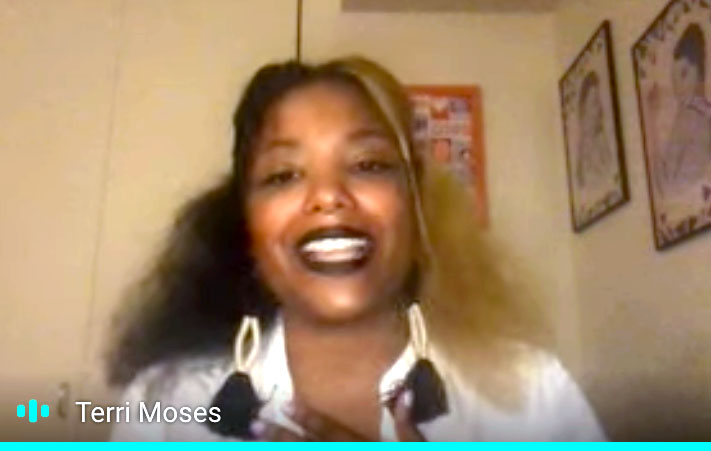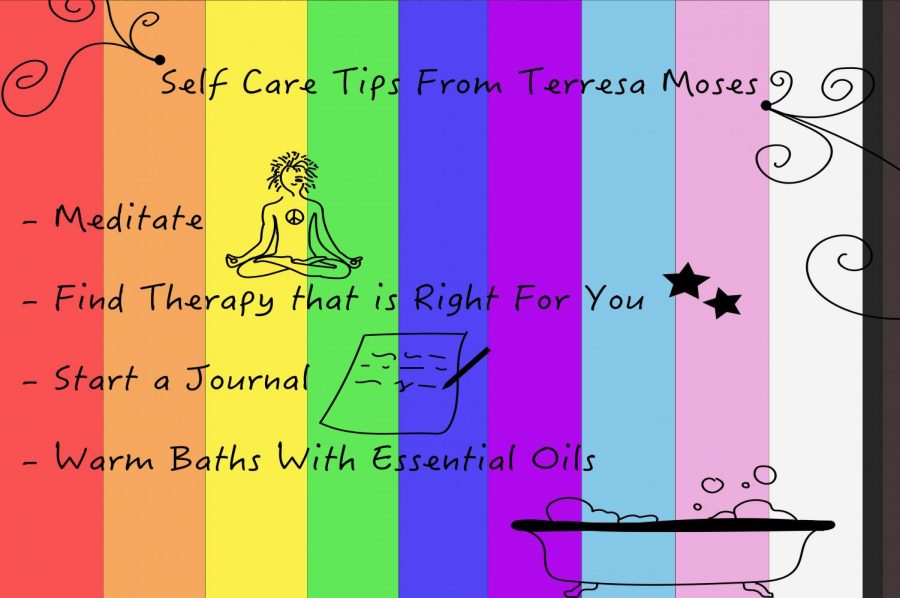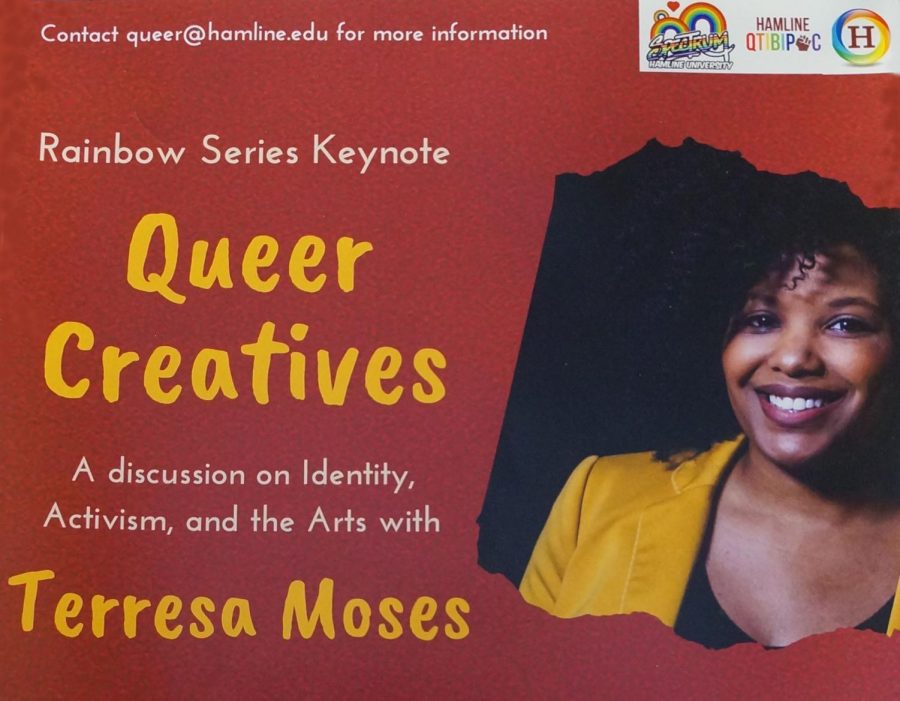Translating Identity and Beliefs into works of Art
This year’s Rainbow Keynote focused on identity, activism and the art used to translate it. Reporter: Z Martinez
March 4, 2021
Hamline University’s Sexualities and Gender Diversity Programs collaborated with Spectrum as well as Hamline QTIBIPOC for Rainbow Keynote: Queer Creatives: A discussion on Identity, Activism and the Arts. This was an interactive virtual event open to the public with queer artist and activist of color, Terresa Moses.
Moses is a professor and director of justice at the U of M who is currently a Ph.D. candidate in social justice education at the University of Toronto. She is also the creative director at Blackbird Revolt — a social justice-based design studio — and a core team member of African-American graphic designers. She has been and will be continuing her participation in the various protests for social change and justice.

Terresa Moses speaks about how art is a reflection of society and how we digest current events.
In the panel, those who attended had the chance to hear about how art and design is used to help communicate important and ethical messages, and are especially crucial during this time. Moses expressed that art is a reflection of what is going on in culture and in society. Art allows people to digest what is happening in the world right now and be able to see things in a different perspective.
Art is used to shape society and can be used as an outlet for many people to express themselves, allowing their voices to be heard in a different manner. Over the past year, everyone was forced to experience very painful and difficult situations, and the need for their voices to be heard was intensified. Artists, such as Moses, used their art as a form of translation for what was happening all around them.
“My need to get messages out there that’s going to support and uplift my communities is what influences the art that I do,” Moses said.

These are four things Moses does for her own self care and encourages others to try.
Self identities also play a huge role within this concept of using art as not only translation but also for expressing their own identities, and what it is like to be who they are in society. Their experiences and emotions unite within their art and give others the chance to understand what it is they feel and experience on a daily basis. Moses spoke of how people could use these experiences to find creative ways to discover freedom and liberation.This freedom was extended to the panel, which was made to be a safe place to speak freely and ask questions about the topic of identity and art.
Moses emphasized being able to use one’s voice to push forward during these times and stand up for what we believe in, as is never feeling the need to change ourselves for the benefit of others.
“Don’t silence your voice,” Moses said. “Don’t change your voice to make people comfortable.”

